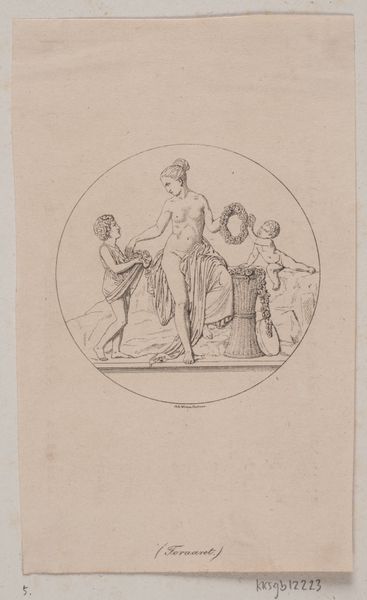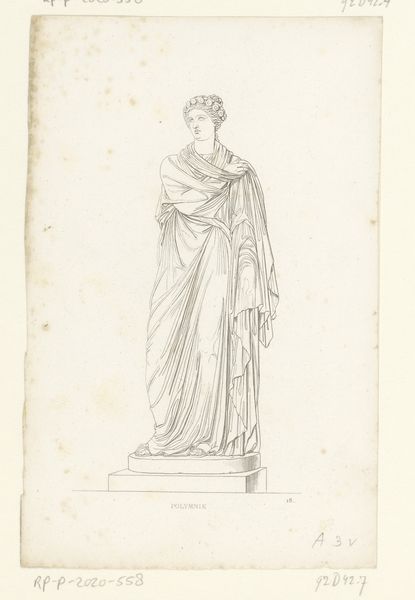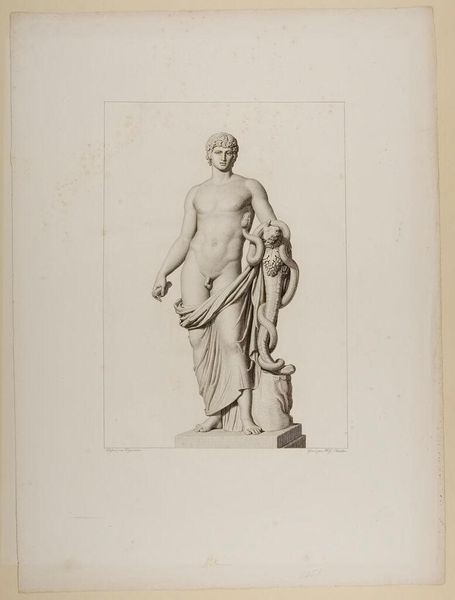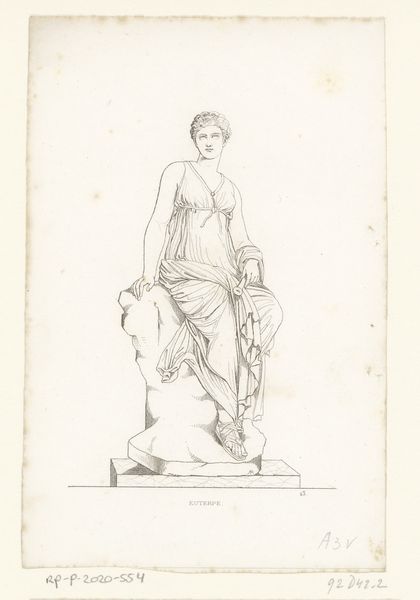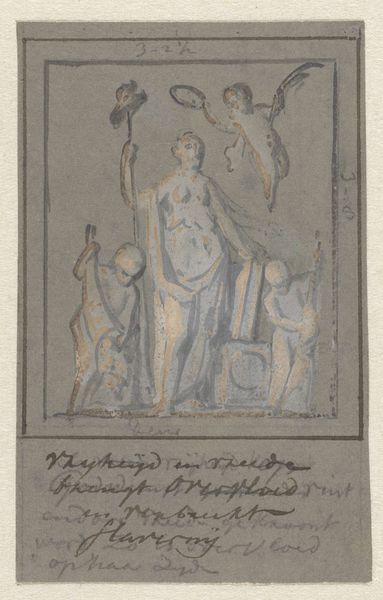
drawing, pencil
#
drawing
#
pencil sketch
#
old engraving style
#
classical-realism
#
figuration
#
personal sketchbook
#
pencil
#
sketchbook drawing
#
pencil work
#
history-painting
#
academic-art
#
nude
Dimensions: height 178 mm, width 123 mm
Copyright: Rijks Museum: Open Domain
Editor: So, this is "Drie schikgodinnen," or "Three Fates," made by Etienne Acille Réveil in 1830, using pencil on paper. It has such a delicate quality, almost ghostly. What stands out to you about this pencil drawing? Curator: It's fascinating to consider this work through the lens of its materiality. Réveil used pencil, a relatively accessible and inexpensive medium, to depict a classical subject. Pencil facilitates mass production by preparing studies or tracings that translate easily to engravings. It allows the dissemination of classicism beyond elite circles, wouldn’t you agree? Editor: Absolutely, it seems like a democratization of art, in a way. So, the choice of pencil itself makes the art form accessible. What about the depiction of the fates? Curator: Here, consider the context: Réveil, working in 1830, is engaging with a long tradition of representing these figures. What does it mean to reproduce these ancient images with such accessible and simple materials? Editor: Is he questioning or celebrating that classical imagery? Curator: I believe Réveil's drawing invites us to examine how the means of artistic production affect cultural understanding. Does the relative ease of making a drawing such as this influence how the viewer values or understands the mythology it portrays? Is pencil a material fit to translate grand sculpture, and what power dynamic may exist in that translation? Editor: It's making me think about art consumption, then and now. Even today, we see a reproduction like this and make our own meaning based on all that we now know. Curator: Precisely. We bring our own materials, cultural contexts, and production habits to bear on its meaning. I see both of us coming closer to something complex by viewing “Drie schikgodinnen” with that in mind. Editor: Right. Thanks, this materialist viewpoint helps a lot to look closely at the conditions in which it was created!
Comments
No comments
Be the first to comment and join the conversation on the ultimate creative platform.





